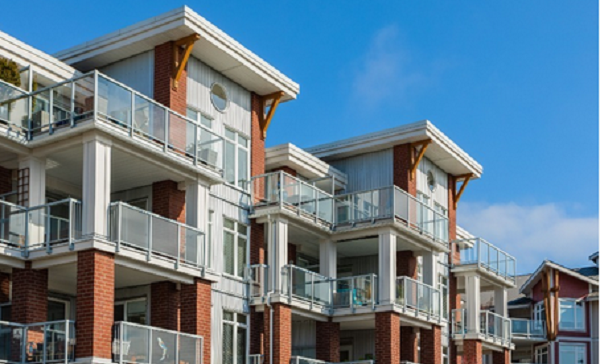‘Cost of delivery crisis’: Developers say the pivot to purpose-built rental isn’t going to be easy
As sales of new condominiums continue to languish, more real estate developers are considering a pivot to purpose-built rental. But those with a track record of building in that space warn that anyone who thinks it will be an easy transition is in for a bumpy ride.
“I’d say a lot of groups are looking at converting to rental out of necessity because their condo projects are not viable. It’s the least-bad option,” said Derick Fluker, chief investment officer at Wesgroup Properties.
But the least-bad option still faces major issues. The cost of building multiresidential buildings, particularly in urban areas, can be punishingly high. Prices for construction and land as well as government taxes and fees have all risen drastically. Condo builders have had to adjust to fundamentally different timelines for profitability.
“There’s a lot of guys who are now looking at rental as a pivot given their circumstances,” said Oren Turkienicz, vice-president of acquisitions for Pinemount Developments Ltd., which specializes in purpose-built rental. “Expansion to that market for people who are just trying it out could lead to potentially poor results – the returns aren’t going to be the same.”
When a condo building is completed, the developer transfers the ownership to all the individual buyers of the apartments, usually with enough left over to pay off any construction loans. Rental builders such as Pinemount typically tend to hold onto their buildings, so they have to either find refinancing sources cheap enough for rents to cover the loans or accept that a big chunk of capital could be stuck in the project potentially for years. Refinancing is increasingly only available from government-backed programs such as the Canada Mortgage and Housing Corporation’s MLI Select program, though Mr. Fluker notes that program has stringent funding caps.
According to Mr. Fluker, many developers are finding it impossible to make a profit on either type of building.
“We call it a ‘cost of delivery crisis.’ Simply put, the cost of building today is higher than what the market will bear. As a country, we need to focus the cost of delivering housing,” he said.
Altus Group, a provider of asset and fund intelligence for the commercial real estate industry, found in its 2025 Canadian Cost Guide that, while prices on some construction inputs rocketed upwards as much as 40 per cent per year between 2021 and 2023, in 2024 most of that escalation slowed dramatically and in some cases even fell below the level of inflation. But what hasn’t fallen are government fees on newly built units. Altus’s 2024 Municipal Benchmarking Study for the Canadian Homebuilders’ Association found that, across the country, fees for high-rise buildings have gone up since 2022. The nine most expensive markets (out of the 23 it studied) are all in Ontario, with Toronto leading the nation with a per-unit fee of $134,900.
“There was a period of time when development was profitable and they were willing to pay those fees,” Mr. Fluker said. “Then we hit a revenue ceiling and costs continued to increase.”
Those who are actually building new rental in this environment must develop a ‘secret sauce’ to make it profitable. When they do, they often find they are very much in the minority among builders.
“I think there’s been a severe lack of building new rental in every market. … I think it’s important to have developers who understand how to build effectively,” said Mr. Turkienicz. He’s not about to give away his company’s entire recipe for success, though he mentions that prefabricated concrete panels have been cheaper and make construction faster than doing cast-in-place builds.
“We stay in the mid-rise market – its challenging to underwrite in a higher-density product – and we find it challenging to pencil-out underground parking,” he said.
This preference for surface-lot parking comes with considerable savings: according to his math, burying a parking garage can cost as much as $100,000 per spot, which could add perhaps $17.5-million to a 250-unit apartment building with a parking ratio of 70 per cent. A surface lot would cost as little as $10,000 per space. In a condo you can sell parking spots to an owner as a separate line item, but a rental operator is rarely able to collect enough of a monthly rent premium to justify the cost.
Despite its success in secondary Ontario markets such as Barrie, Kitchener and Peterborough, Pinemount is still a relatively small player, building a few hundred units at a time. Housing economists and political parties talk about Canada needing to deliver hundreds of thousands more homes in the next few years to keep up with demographic demand.
According to an analysis by market researcher Zonda Urban, the biggest cities in the country have often ambitious amounts of rental development in the planning stages. In terms of deliveries, the numbers are still quite small.
For example, Zonda’s tracking of the busiest rental building area of the country – the Greater Toronto and Hamilton Area – showed that in the fourth quarter of 2024 there were 312 rental projects, with 126,406 apartments in preconstruction. But there are only 14 projects (5,761 apartments) that are close to launching with interior finishing work ongoing.
The current federal election has been awash with proposals on how to lower costs and unlock a wave of new housing construction: Conservative opposition leader Pierre Poilievre has promised to withhold federal money from municipalities that don’t build more homes faster, while Liberal Leader Mark Carney proposes creating a new home-building agency to build deeply affordable units across the country, leveraging government land and balance sheets.
“To build a rental property, that can take five to 10 years from conception to stabilization, it’s really difficult for investors if they don’t have confidence you’re going to have consistent policy around rental housing,” said Michael Tsourounis, managing partner and chief investment officer at Hazelview Investments, which owns 21,000 apartments across the country in multitenant buildings and has development plans to build another 23,000.
As much as Mr. Tsourounis wants to see policies that cut “red tape” and speed up planning (according to another 2024 study from Altus, Canada ranked 29th out of 30 OECD countries on permitting to approval times) or consider new tax or funding models, his main wish is for predictability in policy.
“A well-structured housing policy is something that transcends political parties. This isn’t an issue people should be voting on just today, these are 25-30 year plans that have to be put in place,” he said.
This article was first reported by The Globe and Mail














